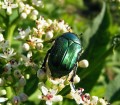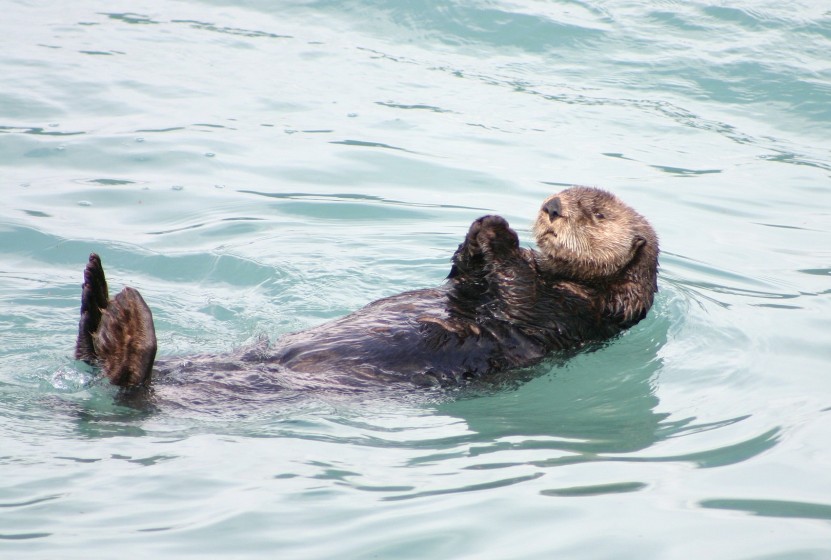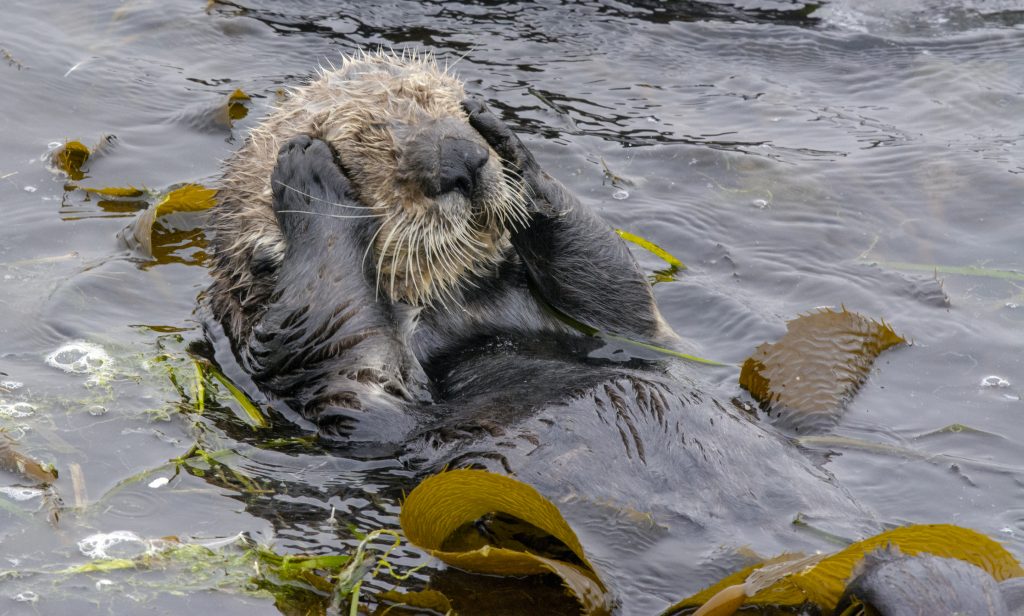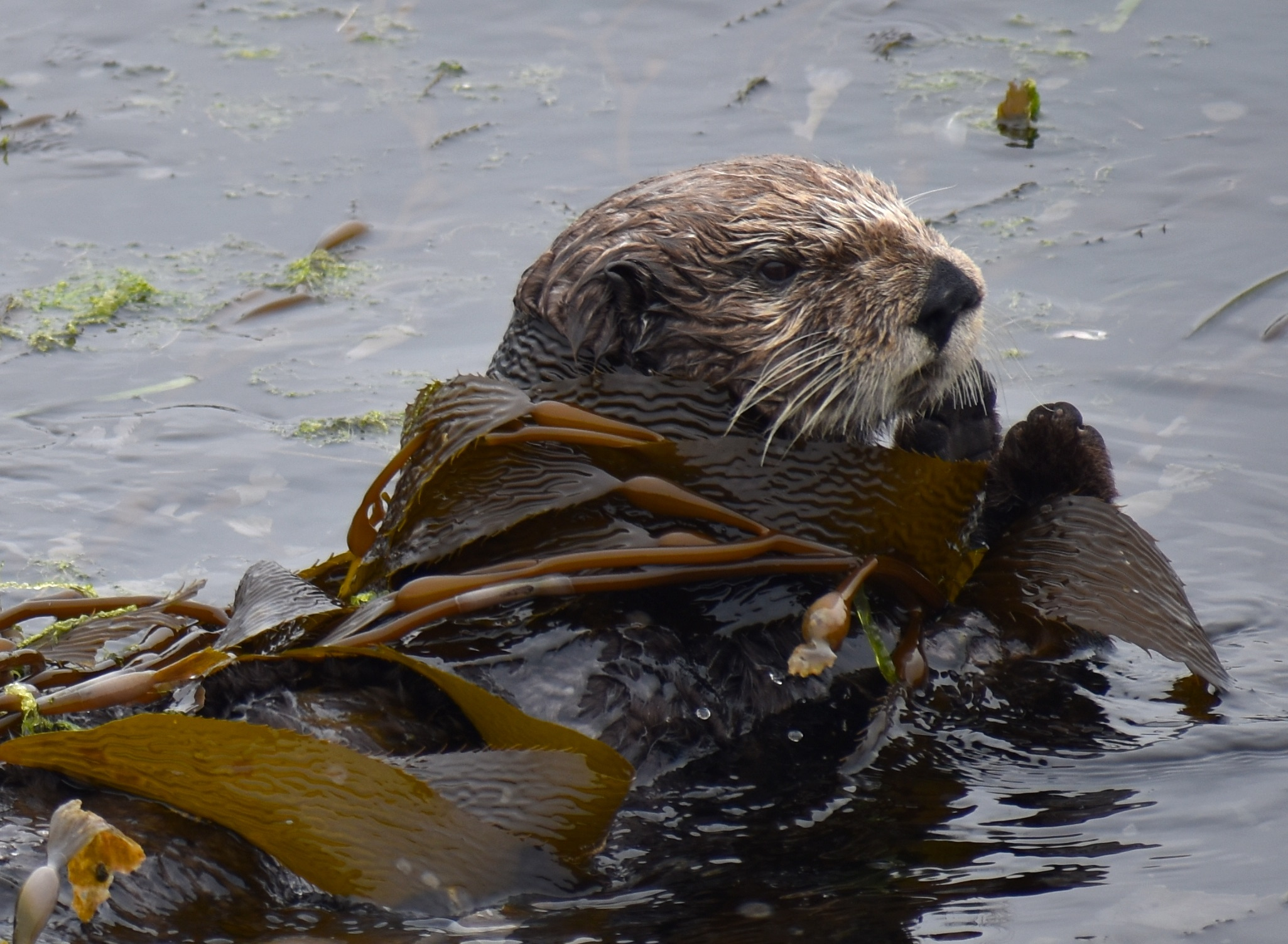The Southern Sea Otter (Enhydra lutris nereis) also goes by the name California Sea Otter and has the distinction of being one the heaviest members of the weasel family, yet one of the smallest marine mammals. California Sea Otters live among the protected shallow coastal waters between Half Moon Bay and Santa Barbara with a small colony on San Nicolas Island.
At one time, the Southern Otter lived along nearly the entire coast of California and as far south as Mexico. After being overly hunted during the 18th century they were thought to be extinct. In 1938, a small group was found living near Big Sur. All of the 3,000 Southern Sea Otters in California today come from these survivors. Nowadays, Sea Otter life is pretty good, and follow a busy schedule of eating fresh seafood, sleeping, and grooming their dense fur.
Otters consume up to 25% of their body weight each day and spend nearly half their waking hours foraging underwater for food. All of that eating is needed in order to provide enough calories to fuel their high metabolisms. This high metabolism produces the body heat necessary to counter the hypothermic effects of being constantly immersed in cold ocean water.
A sea otter’s diet mainly consists of fish, mollusks, and crabs. Their hunting techniques make them very unique in the animal world. Unlike any other marine mammal, when Sea Otters catch fish they use their forepaws instead of their teeth. They will also use their paws to turn over rocks while searching for hidden prey.
Most notable is the Otter’s use of rocks as tools to wrest stubborn abalone from the reefs below and smash the shells of clams and mussels. After obtaining their food underwater, Sea Otters will float on their backs and use their chest as a table while they use a carefully selected rock to break into the hard shells of their meal. A Sea Otter’s diet also makes them a keystone species that promotes the health and growth of the kelp forest ecosystem. The Otter’s love for delicious sea urchin prevents the urchins from taking over and deforesting the kelp beds. More Uni please!
After meal time, Sea Otters will roll a few times to clear away any food from their fur and then begin their other major pastime which is to fastidiously groom their fur. Otters can reach every part of their body due to loose skin and they must do this since Sea Otters lack thick blubber like other marine mammals. It is imperative that their fur is always clean and properly taken care of in order to maintain body temperature. Luckily, Sea Otter fur is the densest of any other animal and performs like the technical outerwear of humans. In fact, Otter’s skin never gets wet due to a two-layer system.
The first outer layer is comprised of long guard hairs that are waterproof. This layer the Otters maintain by spreading natural oils upon and making sure there are no knots or matting.
The second type of fur is much shorter and sits next to the body, acting as the dry insulating layer. Sea Otters constantly blow air into this fur to maintain the loft and keep their skin surrounded by a layer of warm, dry air which prevents heat loss. This air layer also makes Sea Otters incredibly buoyant, so much so, that young Sea Otters cannot even dive below the surface. Otter mothers will bring their young upon their chests to groom them and keep them extra warm-up and out of the water.
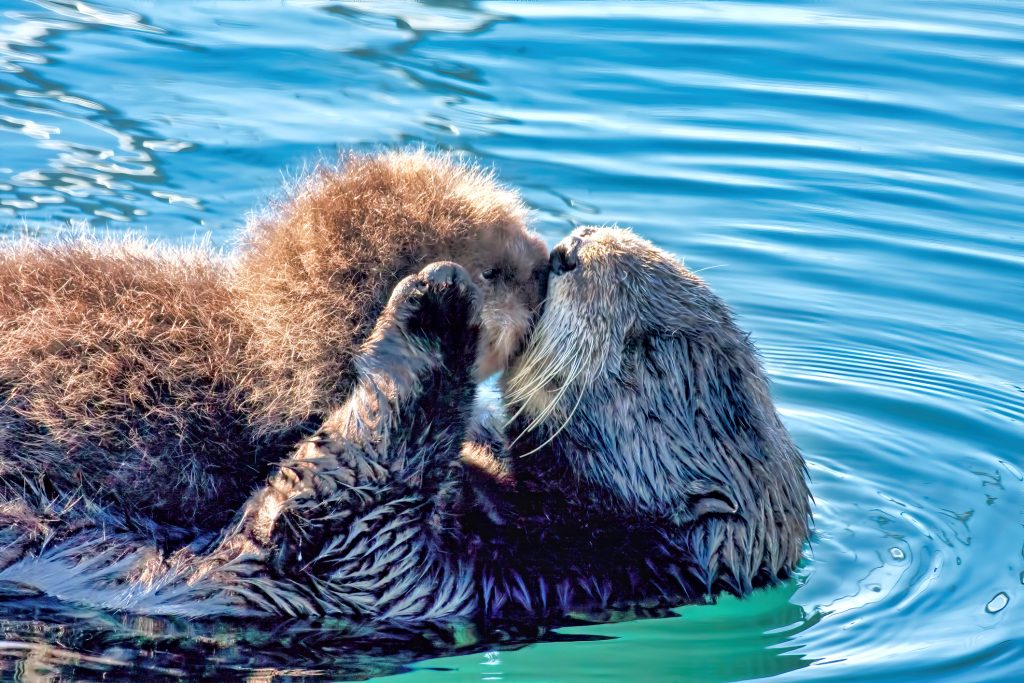
Sea otter mother grooms her pup. Sea Otters will blow air to create a loftier layer of insulation between their fur
Now that the Sea Otter has eaten, saved the environment, and spiffed his fur, it’s time for a nap! Otters sleep floating on their backs, often in large social groups called rafts. But before nodding off, Sea Otters have one more trick up their furry sleeve- they wrap themselves and their young in kelp so as not to be carried off by the wind and the currents, because nobody likes waking up in a strange kelp bed.

